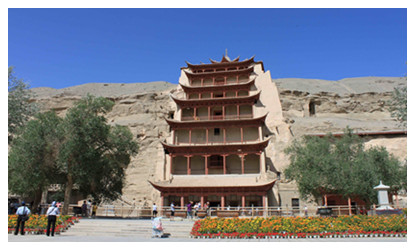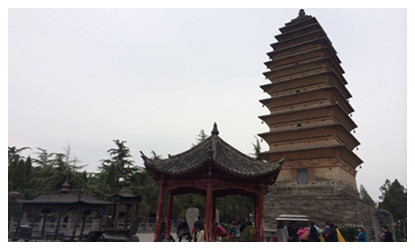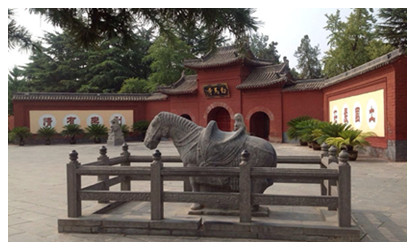Skype: neodalle-travel
Tel: +86 135 7447 2266
E-mail: sales@visitaroundchina.com

Buddhist Grotto
 Buddhism was first introduced to China along the ancient Silk Road. The Silk Road is a channel not only ancient trade but also cultural exchange. Chiseled into cliffs, grotto is the oldest item of Buddhist architecture. The early Chinese grottoes were built along the ancient road of the introduction of Buddhism in the 3rd century, Xinjiang is the first area where grottoes were built.
Buddhism was first introduced to China along the ancient Silk Road. The Silk Road is a channel not only ancient trade but also cultural exchange. Chiseled into cliffs, grotto is the oldest item of Buddhist architecture. The early Chinese grottoes were built along the ancient road of the introduction of Buddhism in the 3rd century, Xinjiang is the first area where grottoes were built.
Buddhist Pagoda
 Pagoda is a common oriental traditional building with specific form and style. As the symbol of Buddhism where people climb to have a bird's-eye-view, Pagoda is often erected in temples. Pagodas can be made of stone, wood, colored glaze or metal. Pagodas have an odd number of layers. Seven-layer and Nine-layer pagodas are commonly built. The shape of cross-section is rectangular, eight-sided or even circular. Initially, the pagoda served as the central axis alongside which rows of halls and monks' rooms spread out. Later, pagodas were built near the main palace hall.
Pagoda is a common oriental traditional building with specific form and style. As the symbol of Buddhism where people climb to have a bird's-eye-view, Pagoda is often erected in temples. Pagodas can be made of stone, wood, colored glaze or metal. Pagodas have an odd number of layers. Seven-layer and Nine-layer pagodas are commonly built. The shape of cross-section is rectangular, eight-sided or even circular. Initially, the pagoda served as the central axis alongside which rows of halls and monks' rooms spread out. Later, pagodas were built near the main palace hall.
The oldest monastery on Chinese ground is the White Horse Temple in Luoyang. A pagoda can also be seen as a symbol for a monastery. Big Wild Goose Pagoda, Three Pagodas of Chongsheng Temple in Dali are among those most famous pagodas in China.
Buddhist Temple
 The Buddhist temple is the holy place where Buddhist doctrine is maintained. Differing from other religions' temples, Chinese Buddhist temples have many characteristics of their own. For example, similar to Chinese palaces and dwelling houses, they are comprised of a number of small yards. The oldest temple in China - White Horse Temple is a typical example of this.
The Buddhist temple is the holy place where Buddhist doctrine is maintained. Differing from other religions' temples, Chinese Buddhist temples have many characteristics of their own. For example, similar to Chinese palaces and dwelling houses, they are comprised of a number of small yards. The oldest temple in China - White Horse Temple is a typical example of this.
The architectural styles of Buddhist temples in China were mainly formed in three periods: Han Dynasty (206BC-220), Northern and Southern Dynasties (386-589), and Tang Dynasty (618-907). The first period sees the retention of Indian styles. In the second period, wooden framework was added to the original styles. In the third period, the styles of Buddhist temples were totally Sinicized and the pavilion-like pagoda, which is unique to China, became popular.
Chinese Buddhist Architecture Tour
Being the spiritual symbols of Buddhism, these temples, grottoes and pagodas are not only monastic holy places, but also serve as sacred land that can purify souls. Visiting the temples, pagodas and grottoes in China, you can not only learn the history of Chinese Buddhism but also the art and culture of ancient Chinese.
 Ask Questions ?
Ask Questions ?